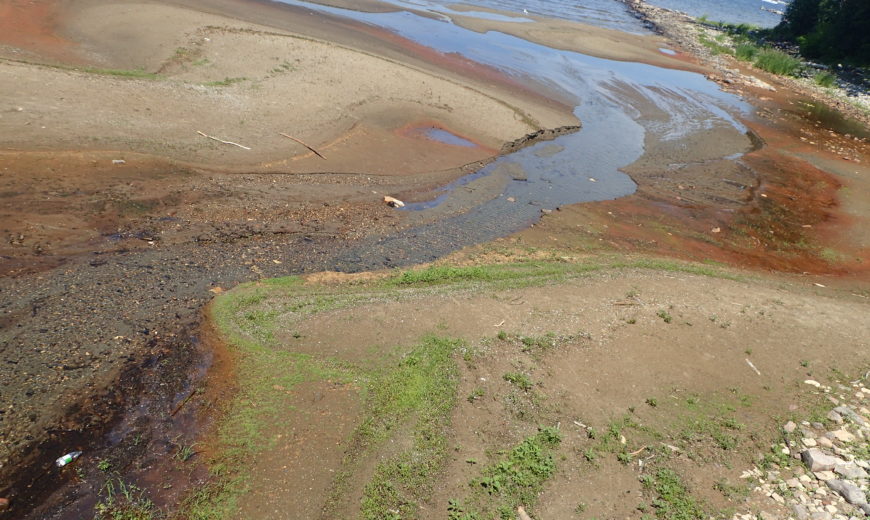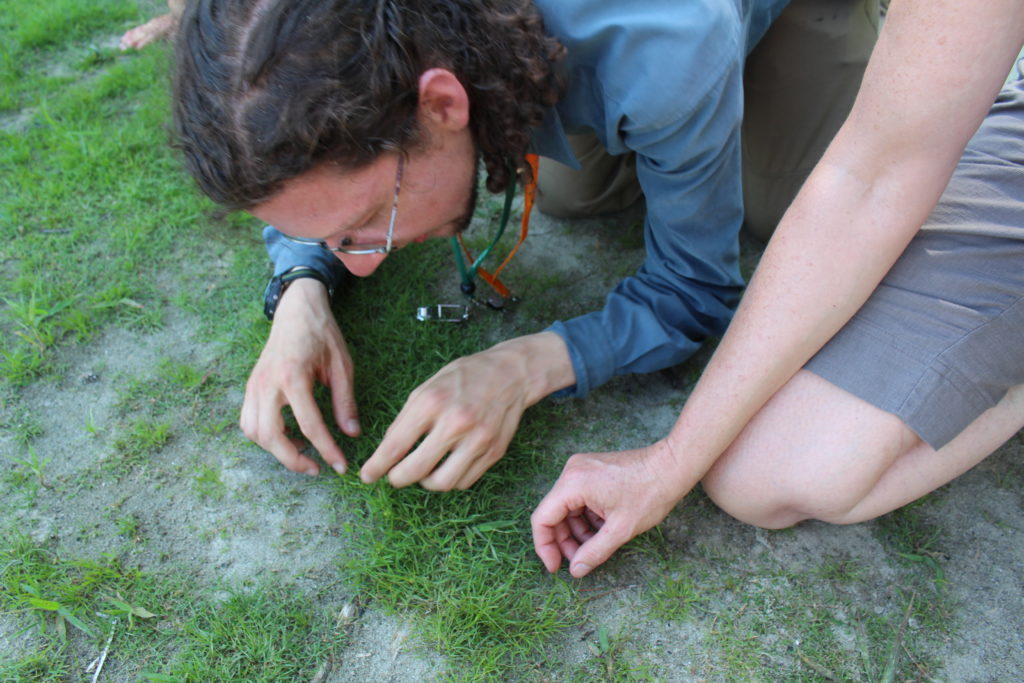The Upside to Low Lake Levels

What’s so special about these tiny plants?

Lake Champlain and particularly our beaches are home to rare, endangered and even globally rare plant species. Wright’s spikerush (shown below) is currently found in less than 20 sties…around the world, but it can be found right here in Burlington! While low lake levels are a bit of a bummer to beachgoers, these tiny plants find the dry conditions ideal. Seeds lie dormant for years under water and when water levels remain low in summer months, these plants spring to life.
Some are a tiny as your finger, and might look like insignificant weeds that most of us trample over without a passing thought, but they are unique and rare!

On July 12th, several parks staff and local naturalists were led on a guided tour of two beach locations to discover these tiny green gems. Aaron Marcus, the Assistant Botanist for the Vermont Natural Heritage Inventory with Vermont Fish & Wildlife Department, took us to locations near the Lone Rock Point and onto the north end of North Beach, but there are several others along our shoreline where these plans can be found.
He pointed out several plant species along the walk, some were only distinguishable from their common cousins by examining them with a powerful magnifying lens.
| Beach pea | (Lathyrus japonicus var. maritimus) | S2 Threatened in Vermont |
| Marsh horsetail | (Equisetum palustre) | S2 Threatened in Vermont |
| Awned cyperus | (Cyperus squarrosus) | S3 Watch List |
| Wright’s spikerush | (Eleocharis diandra) | S1-G2 |
| Creeping lovegrass | (Eragrostis hypnoides) | S2-S3 |
| Narrow false-oats | (Trisetum spicatum) | S3 Watch List |
| Champlain beachgrass | Ammophila champlainensis | S1-G2-G3 Endangered in Vermont |
| Water hemp | (Amaranthus tuberculatus) | S2 |
The S indicates state ranks as the rarity/risk of extirpation of the species. Many factors are used in these ranks, but S1 plants generally are known to occur at fewer than 6 extant sites in Vermont. S2 plants generally at fewer than 20 sites, and S3 plants generally at 20 to 100 sites. The G2 similarly means that it is generally known at fewer than 20 extant sites globally, G3—fewer than 100 globally. When there is a split rank, it means that scientists believe the plant is either rank, but haven’t determined which yet—or it often means that the species seems to fall somewhere in between.

We didn’t manage to find any of Smith’s bulrush (Schoenoplectus smithii var. smithii) S1, a very rare plant that grows on both beaches among the Wright’s spikerush, and it is rarer than the others, but Aaron is sure it’s still there. Also cursed crowfoot (Ranunculus sceleratus) is a weedy buttercup that occurs on those beaches among the Wright’s spikerush. That pretty little plant is on our state Watch List and botanists are still debating if it really is of conservation concern.
So what is BPRW going to do to help protect these special plants?
We plan to continue working with the Vermont Fish & Wildlife to monitor and map these plant species. We also will provide signs to alert people of the importance of the plants and to be mindful of even the smallest lifeforms. Your presence can significantly impact the survival of several plant species.
